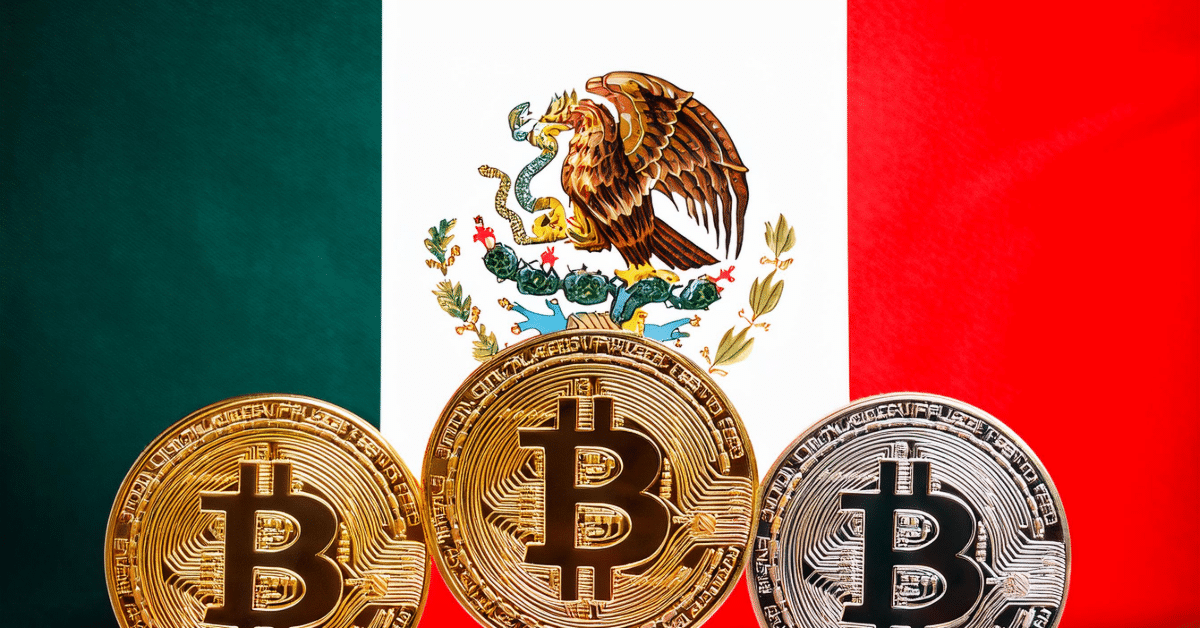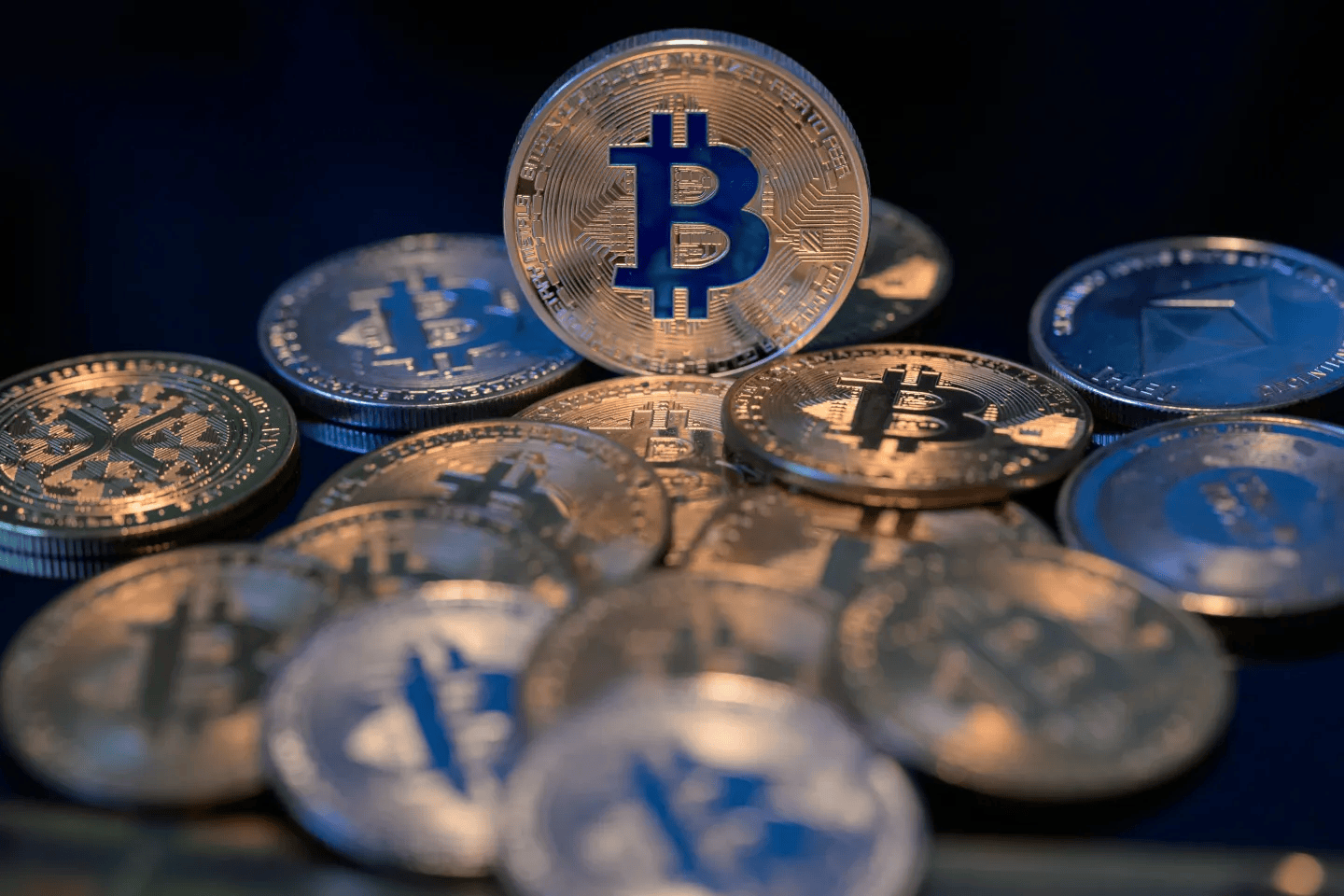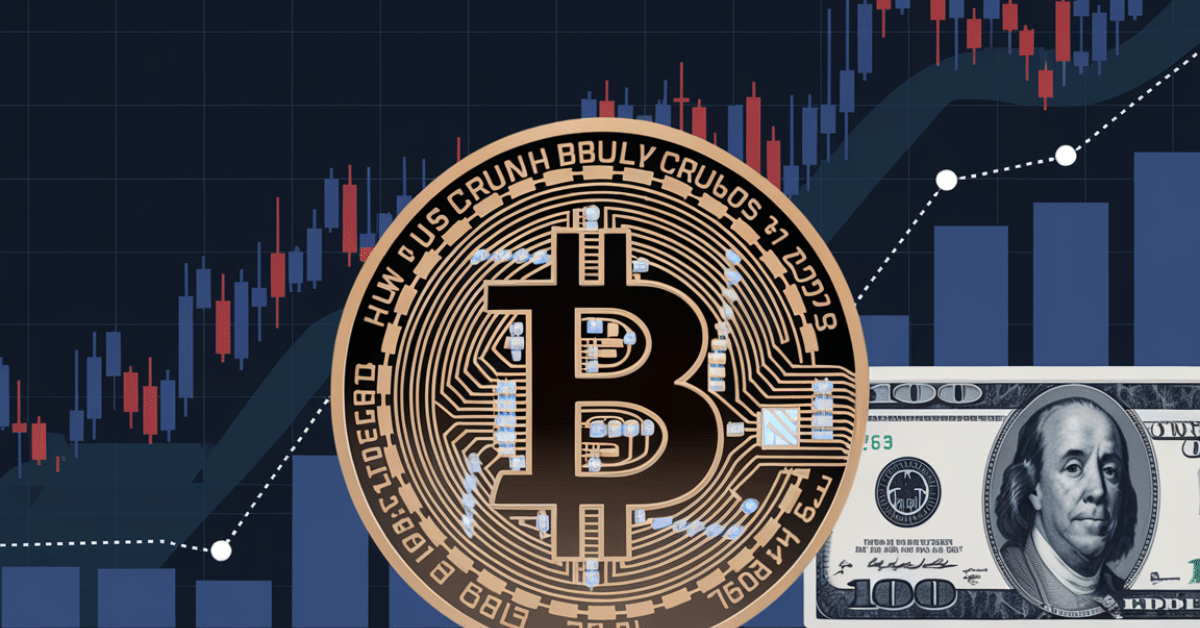Key Takeaways
- To buy crypto in Mexico, pick a trusted exchange, select a legal exchange, complete KYC verification, fund your account, and decide how to store your coins securely.
- Selling is just as simple: transfer your coins to an exchange, set your price, and sell and withdraw your money.
- Stay informed on Mexico’s crypto regulations, taxation rules, and secure storage practices to make sound trading decisions.
Cryptocurrency is becoming very popular in Mexico, with platforms like Bitso and Volabit making it easy to buy and sell digital coins. Using local payment methods like SPEI transfers and OXXO Pay, you can trade Bitcoin, Ethereum, and other cryptocurrencies directly with Mexican Pesos. Thanks to Mexico’s Fintech Law, crypto trading is regulated, providing a secure and legal way to invest. This guide will help you understand the steps, tools, and rules to confidently navigate the growing crypto market in Mexico.
How to Buy Cryptocurrency in Mexico?
Buying cryptocurrency in Mexico has become increasingly accessible thanks to local exchanges, payment methods, and a growing crypto community. Here’s a detailed guide tailored to the Mexican market.
Choose a Cryptocurrency Exchange in Mexico
The first step is to select a reliable exchange that operates in Mexico. Popular local platforms include Bitso, Mexico’s largest and most trusted exchange, and Volabit, which is known for its ease of use. International exchanges like Binance and Coinbase are also widely used in Mexico, but they may require additional steps for deposits and withdrawals.
When choosing an exchange, look for:
Support for Mexican Pesos (MXN): Exchanges like Bitso allow you to trade directly with pesos.
Low Fees: Compare deposit, trading, and withdrawal fees.
User Experience: Opt for platforms with Spanish-language support and local customer service.
Bitso is an excellent choice for beginners because it integrates seamlessly with local banks and offers a wide range of cryptocurrencies.
Create and Verify Your Account
After selecting an exchange, you’ll need to register and complete identity verification (KYC):
Sign Up: Visit the exchange’s website or app and create an account using your email address.
KYC Verification: Submit a government-issued ID, such as your INE (Instituto Nacional Electoral) card or passport, and proof of address like a utility bill. Some exchanges may require a selfie or live video for added security.
Keep your CURP (Clave Única de Registro de Población) handy, as some platforms may request it during the verification process. Verification is usually quick, taking a few hours to a day.
Deposit Mexican Pesos (MXN)
Once your account is verified, you’ll need to fund it with pesos. Exchanges in Mexico support several local payment methods:
SPEI Transfers: The fastest and most common option, allowing instant bank transfers from Mexican banks like BBVA, Banorte, HSBC, and Santander.
OXXO Pay: Perfect for those without a bank account. Generate a barcode on the exchange and pay at any OXXO store. However, OXXO Pay deposits may take up to 24 hours to process.
Debit/Credit Cards: These are accepted by some platforms but may incur higher fees.
Tip: Use SPEI for fast and cost-effective transfers. Most banks in Mexico don’t charge fees for SPEI transactions, making it an ideal choice.
Choose the Cryptocurrency to Buy
Once your pesos are in the exchange wallet, decide which cryptocurrency you want to buy. Popular options include Bitcoin (BTC), Ethereum (ETH), and Stablecoins (e.g., USDT, USDC).
Many Mexican users prefer USDT or USDC for stability when holding funds for extended periods, as these coins are not affected by peso or crypto market fluctuations.
Cryptos pegged to the US Dollar are useful for avoiding volatility. Research the coin’s purpose and historical performance before making a purchase.
Place a Buy Order
To buy cryptocurrency:
Navigate to the exchange‘s “Buy” section.
Enter the amount in pesos (MXN) or the quantity of cryptocurrency you want to purchase.
Choose your order type:
- Market Order: Buy instantly at the current price.
- Limit Order: Set a specific price and wait for the market to match it.
Confirm the purchase. Your cryptocurrency will appear in your wallet once the transaction is complete.
Beginners may find market orders more straightforward, while experienced traders can use limit orders to optimize costs. Start with a small amount to understand the process before committing larger sums.
Secure Your Cryptocurrency
After purchasing crypto, it’s essential to secure it:
Exchange Wallets: Convenient for short-term trading but less secure for long-term storage.
External Wallets: Use mobile wallets like Trust Wallet or hardware wallets like Ledger Nano for better security.
Back up your wallet’s recovery phrase and private keys. Never share them with anyone.
Understand Mexico’s Crypto Regulations and Taxes
In Mexico, cryptocurrency is not considered legal tender but is regulated under fintech laws. Exchanges like Bitso comply with local laws, providing an added layer of security. While crypto transactions are not explicitly taxed, any gains from selling crypto may be subject to capital gains tax. Keep detailed records of all your transactions for accurate tax reporting.
How to Sell Cryptocurrency in Mexico?
Selling cryptocurrency in Mexico is a straightforward process, especially if you’re using a local exchange like Bitso or Volabit.
Transfer Crypto to Your Exchange Wallet
Before selling, ensure your cryptocurrency is in the wallet of the exchange you plan to use. If your crypto is in an external wallet (like Trust Wallet or Ledger), transfer it to the exchange.
Log in to your exchange account, go to the “Deposit” section, and select the cryptocurrency you want to sell. Copy the exchange wallet address carefully to avoid errors. Use your external wallet to transfer the crypto to this address.
Bitso users should confirm their deposit using the app, as it provides real-time updates. For faster transactions, choose cryptocurrencies with lower network congestion, like Litecoin or USDT.
Decide How Much Crypto to Sell
Once the funds appear in your exchange wallet, navigate to the “Sell” section.
Enter the amount of cryptocurrency you want to sell, either in crypto terms (e.g., 0.05 BTC) or the peso equivalent.
Review the current market price displayed by the exchange to ensure it meets your expectations. If you’re using Bitso, check the “Bitso Alpha” feature for advanced pricing options, or use the standard app interface for simplicity.
Choose the Type of Sell Order
Mexican exchanges like Bitso and Volabit offer two primary types of orders for selling:
- Market Order: Sell instantly at the current market price. This is quick and suitable for beginners.
- Limit Order: Set a specific price you want for your crypto. The sale happens only when the market reaches that price, which might take time.
In volatile markets, use limit orders to get a better rate. However, for quick transactions, market orders are ideal.
Convert Crypto to Pesos (MXN)
After the sale is complete, the proceeds will appear in your exchange wallet in Mexican Pesos (MXN). Some exchanges, like Bitso, allow you to hold your pesos in the app until you’re ready to withdraw. You can also convert the pesos to a stablecoin (like USDT) within the platform if you plan to reinvest later.
Withdraw Pesos to Your Bank Account or Use Cash Options
Now that your pesos are in your exchange account, you can withdraw them. Mexican exchanges offer several local withdrawal methods:
SPEI Transfer:
- Link your Mexican bank account (e.g., BBVA, Santander, Banorte).
- Enter the amount to withdraw and confirm the transfer.
- Funds typically arrive within minutes through SPEI, making it the fastest option.
Cash via OXXO: Some platforms allow you to generate a barcode for cash withdrawal at OXXO stores. Processing times may vary, and fees can be higher.
Local Tip: For large withdrawals, SPEI transfers are safer and more cost-effective. If you’re withdrawing to a bank like Bancomer or HSBC, ensure your account name matches the name on your exchange account to avoid delays.
Understand Mexico’s Tax Implications for Selling Crypto
In Mexico, gains from selling cryptocurrency may be subject to capital gains tax.
Keep a record of your sale, including the amount sold, the price at the time of sale, and the pesos received. If your sale results in a profit, this may need to be declared as part of your income.
Consult a tax advisor familiar with cryptocurrency regulations in Mexico to ensure you comply with local tax laws and avoid potential penalties.
Top Cryptocurrency Exchanges in Mexico
Here’s a list of the most popular cryptocurrency exchanges in Mexico, ranked by their popularity and ease of use. Each platform has unique features that make it stand out, along with certain considerations for Mexican users.
Bitso
Founded: 2014
Users in Mexico: Over 4 million
Why It’s Popular:
Bitso is Mexico’s largest and most trusted cryptocurrency exchange. It was one of the first platforms to integrate with local banking systems, making it easy for users to deposit and withdraw Mexican Pesos (MXN) through SPEI transfers. Bitso offers a clean and intuitive app, making it ideal for beginners. It supports a wide range of cryptocurrencies, including Bitcoin (BTC), Ethereum (ETH), and stablecoins like USDT. The platform is also known for its strong compliance with Mexico’s Fintech Law, ensuring safe and regulated trading.
Number of Cryptocurrencies: Over 30, including popular altcoins and stablecoins.
Pros:
- Seamless integration with Mexican banks for quick deposits and withdrawals.
- Spanish-language customer support.
- Highly secure, with insurance on custodial funds.
- Advanced trading tools like Bitso Alpha for experienced traders.
Cons:
- Slightly higher fees for market orders compared to international exchanges.
- Limited to fewer cryptocurrencies compared to global platforms.
Local Regulations: Fully compliant with Mexico’s Fintech Law and regulated by the CNBV (Comisión Nacional Bancaria y de Valores).
Binance
Founded: 2017 (Binance Global); launched services in Mexico in 2021
Users in Mexico: Growing rapidly, estimated at over 1 million
Why It’s Popular:
Binance is the world’s largest cryptocurrency exchange, offering low trading fees and access to over 350 cryptocurrencies. In Mexico, Binance supports SPEI transfers for peso deposits, making it easy for local users to fund their accounts. The platform provides advanced tools for seasoned traders, including futures and margin trading, as well as features like staking and savings for passive income.
Number of Cryptocurrencies: Over 350, including Bitcoin, Ethereum, and a wide variety of altcoins.
Pros:
- Lowest trading fees among major exchanges.
- A wide selection of cryptocurrencies.
- Offers passive income options like staking and savings accounts.
Cons:
- The platform’s interface can be overwhelming for beginners.
- Limited Spanish-language support compared to Bitso.
Local Regulations: Binance operates under its global structure but complies with Mexican banking regulations for peso transactions.
Volabit
Founded: 2014
Users in Mexico: Approximately 500,000
Why It’s Popular:
Volabit is a local Mexican exchange designed for simplicity and affordability. It focuses on offering a smooth user experience with competitive fees. The platform is beginner-friendly, supporting basic buy-and-sell options with Mexican Pesos (MXN). It primarily supports major cryptocurrencies like Bitcoin, Ethereum, and Litecoin.
Number of Cryptocurrencies: Around 10, focusing on major assets.
Pros:
- Simple and user-friendly for beginners.
- Low fees for peso deposits and withdrawals.
- Strong emphasis on security.
Cons:
- Limited cryptocurrency options compared to Bitso and Binance.
- Fewer advanced features for experienced traders.
Local Regulations: Fully compliant with Mexican fintech laws and operates under the supervision of local authorities.
Coinbase
Founded: 2012
Users in Mexico: Approximately 300,000
Why It’s Popular:
Coinbase is a globally renowned exchange known for its ease of use and strong security. In Mexico, it supports credit and debit card purchases, making it accessible to users without bank accounts. The platform offers a straightforward interface, making it a good option for beginners. However, it does not support direct peso deposits, requiring users to convert pesos to US Dollars (USD) before trading.
Number of Cryptocurrencies: Over 150, including major and emerging tokens.
Pros:
- Simple and beginner-friendly interface.
- Industry-leading security.
- Offers free crypto rewards through educational programs.
Cons:
- No direct peso deposits; requires USD for trading.
- Higher fees compared to local exchanges like Bitso.
Local Regulations: Coinbase adheres to international standards and partners with local services to facilitate transactions in Mexico.
Kraken
Founded: 2011
Users in Mexico: Approximately 200,000
Why It’s Popular:
Kraken is favored by advanced traders for its comprehensive tools, including futures, margin trading, and staking. It supports peso deposits through SPEI, enabling local users to fund their accounts easily. Kraken is known for its robust security and transparent fee structure, making it a trusted platform for long-term investors.
Number of Cryptocurrencies: Over 120, including Bitcoin, Ethereum, and popular altcoins.
Pros:
- Advanced trading options for experienced users.
- High-level security with two-factor authentication (2FA).
- Transparent fee structure.
Cons:
- The interface may be intimidating for beginners.
- Limited local customer support in Spanish.
Local Regulations: Operates in compliance with international and local financial guidelines for peso transactions.
Local Taxation and Regulation in Mexico
Taxation in Mexico for Cryptocurrency
In Mexico, cryptocurrency is treated as an asset, and any profits or income derived from it may be subject to taxes. Here are the key points:
Capital Gains Tax: Profits from selling cryptocurrency are considered capital gains and are taxed as part of your personal income. The rate varies based on your overall income level.
Income Tax: If you earn cryptocurrency through mining, staking, or payments for goods and services, it is taxed as regular income.
Business Activities: If trading crypto is part of a business, it may be subject to additional taxes, such as VAT (Value Added Tax), depending on the transaction type.
Record-Keeping: You are required to maintain detailed records of all crypto transactions, including the amount, date, and value in pesos (MXN) at the time of the transaction.
Reporting Requirements: Gains from crypto must be reported during the annual tax declaration to the Mexican Tax Administration Service (SAT).
Regulations for Cryptocurrency in Mexico
Mexico regulates cryptocurrency under its Fintech Law (Ley para Regular las Instituciones de Tecnología Financiera), making it one of the first countries in Latin America to formalize crypto activities.
Exchanges operating in Mexico, such as Bitso and Volabit, must register with the Comisión Nacional Bancaria y de Valores (CNBV) to comply with local regulations. These exchanges are required to implement Know Your Customer (KYC) and Anti-Money Laundering (AML) measures, ensuring users verify their identity through government-issued IDs and proof of address.
While cryptocurrencies are not considered legal tender in Mexico, they are treated as virtual assets under the law. This classification allows individuals and businesses to trade, invest, and accept crypto payments, provided they adhere to the country’s financial and tax laws. However, banks and financial institutions are prohibited from offering cryptocurrency services directly.
Conclusion
Selling and buying cryptocurrency in Mexico is simple and secure when you use trusted platforms like Bitso and Volabit. With easy payment options like SPEI transfers and strong local regulations, trading crypto has become accessible for everyone. By following the steps in this guide, staying informed about taxes, and choosing the right exchange, you can confidently manage your crypto investments in Mexico’s growing market.























